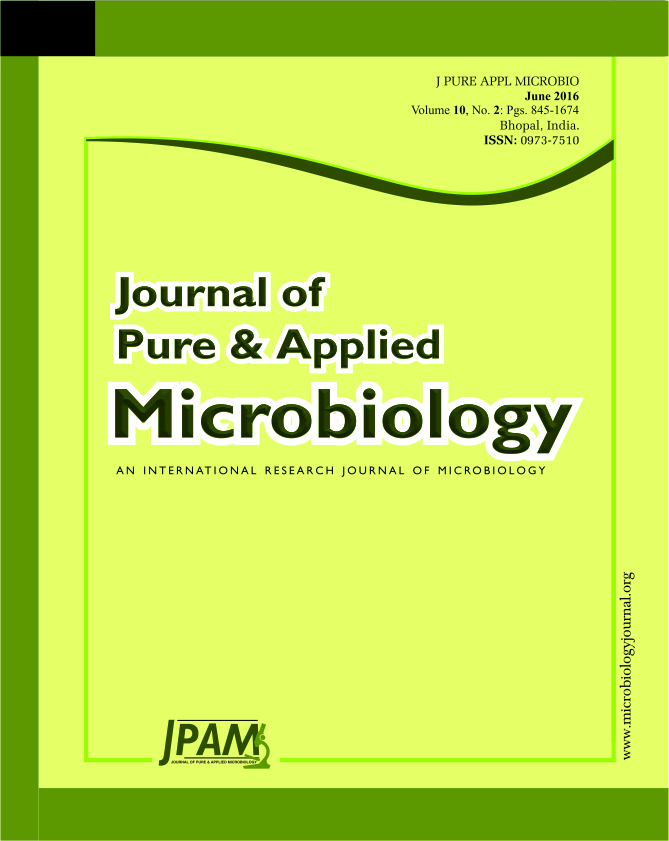The present investigation was undertaken to assess the influence of the biocontrol agents Trichoderma harzianum and T. viride for the management of stem rot of rice caused by Sclerotium oryzae. Eight isolates of Trichoderma out of these eight isolates, four isolates of Trichoderma harzianum and 4 isolates of Trichoderma viride were collected from different sources and used in this study. Trichoderma viride was slow growing, while isolates of Trichoderma harzianum were fast growing. Fungal antagonists (Trichoderma spp.) were tested by dual culture technique to study the inhibitory effect on mycelial growth of pathogen S. oryzae. The inhibition of mycelial growth of S. oryzae was measured up to 6 days. The visible mycelial contact between fungal antagonists and test fungus occurred on 3rd day of inoculation. The inhibition of mycelial growth of the pathogen firstly started by Trichoderma harzianum Pantnagar isolate followed by Trichoderma harzianum New Delhi isolate, Meerut isolate and rests other isolates. The fungal antagonists completely inhibited the growth of pathogen S. oryzae and covered the entire plates within six days of inoculations. However Trichoderma harzianum (Pantnagar isolate) showed maximum inhibition and covered the entire plate on 4th day of inoculation followed by New Delhi and Meerut isolate on 5th day while all other isolates covered the entire plate on 6th day. Trichoderma harzianum (Pantnagar) isolate showed maximum inhibition of the S. oryzae.
Stem rot, Trichoderma spp., Sclerotium oryzae, Rice, Bioagents, Fungal antagonists.
© The Author(s) 2016. Open Access. This article is distributed under the terms of the Creative Commons Attribution 4.0 International License which permits unrestricted use, sharing, distribution, and reproduction in any medium, provided you give appropriate credit to the original author(s) and the source, provide a link to the Creative Commons license, and indicate if changes were made.


